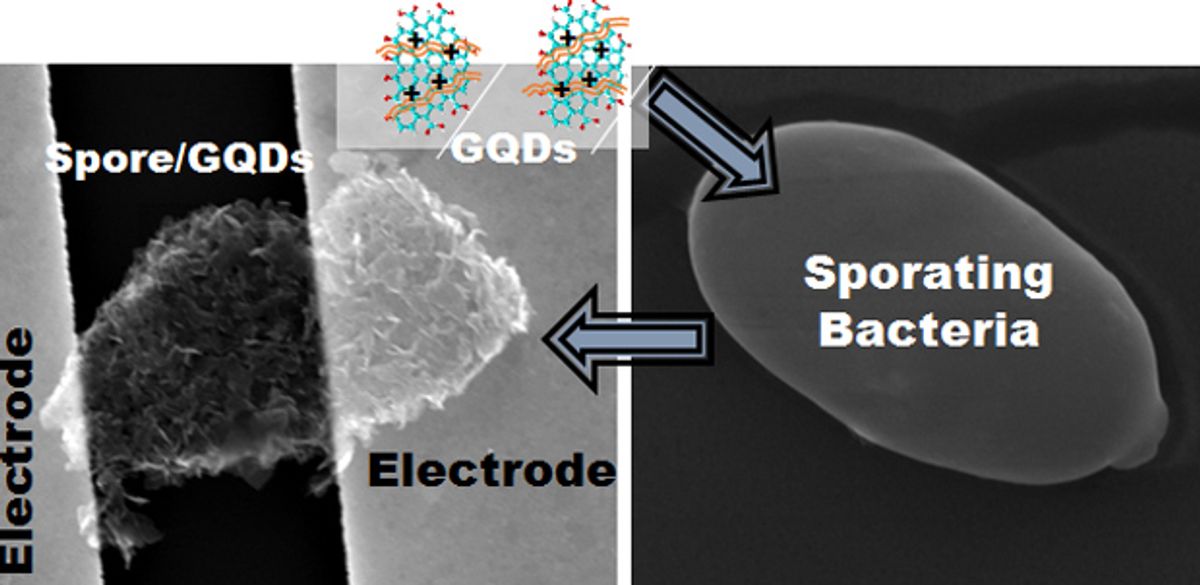Researchers at the University of Illinois Chicago (UIC) have combined graphene quantum dots (GQCs) with a single bacterial spore to create bio-electromechanical devices. This so-called “robotic germ” functions an electromechanical humidity sensor.
Recently, James Tours’ group at Rice University, who were the first to develop GQCs in 2013, created an improved way to manufacture them that promised to open them up to a new range of applications in optics.
However, they may not have considered the possibility of joining them to a living organism for the kind of machine the UIC researchers created. The Chicago-based team have dubbed their hybrid device NERD, standing for Nano-Electro-Robotic Device.
“We’ve taken a spore from a bacteria, and put graphene quantum dots on its surface — and then attached two electrodes on either side of the spore,” said Vikas Berry, UIC associate professor and principal investigator on the study, in a press release.
In research published in the Nature journal Scientific Reports, Berry’s team demonstrated that when the humidity around the spore decreased, the spore would shrink in size. This would bring the GQCs that had been sprinkled on the outside of the spore closer together. The increasing proximity of GQCs would increase the conductivity of the device, which is detected by the electrodes that had been attached to either side.
“We get a very clean response — a very sharp change the moment we change humidity,” Berry said in the release. In their research, they recorded a response time that was 10 times faster than a sensor employing water-absorbing polymers.
Berry added that it was possible to register a response in the sensor even in a vacuum. This might make the device particularly attractive in space applications where top-notch humidity sensors are critical sense they may indicate some other kind of leak.
“This is a fascinating device,” Berry said in the release. “Here we have a biological entity. We’ve made the sensor on the surface of these spores, with the spore a very active complement to this device. The biological complement is actually working towards responding to stimuli and providing information.”
Dexter Johnson is a contributing editor at IEEE Spectrum, with a focus on nanotechnology.



